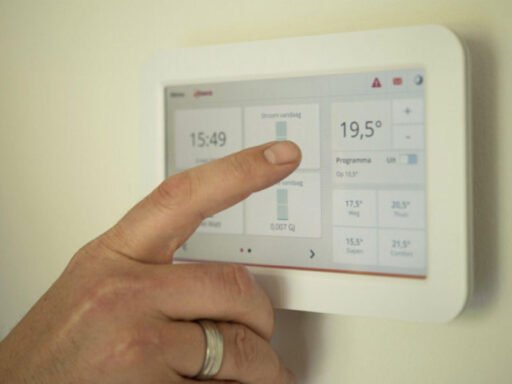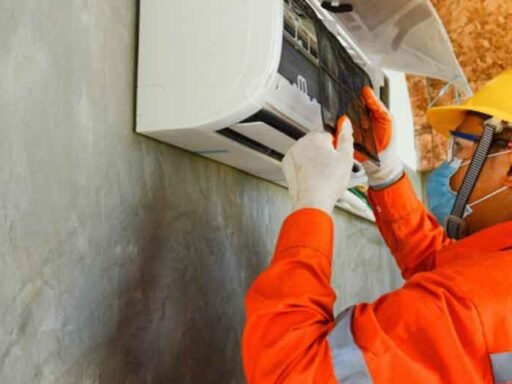As remote work becomes more common, creating a home office that supports both comfort and productivity has never been more important. Gone are the days when a simple desk in the corner of a room sufficed. Today, home offices are carefully designed to enhance focus, reduce physical strain, and encourage creativity. One key trend in home office design is the incorporation of ergonomic furniture, such as adjustable standing desks, that allows for flexible work setups and promotes better posture. By paying attention to design elements, functionality, and comfort, it’s possible to create a space that inspires productivity and well-being.
Designing a home office goes beyond choosing the right furniture—it’s about building a space that makes work feel more comfortable, enjoyable, and even rewarding. Let’s explore the current design trends that are making home offices more effective and employee-friendly.
Prioritizing Ergonomics for Health and Comfort
The foundation of any great home office is a focus on ergonomics. As many remote workers can attest, hours spent sitting at a desk can lead to back pain, neck strain, and fatigue. To address these issues, modern office designs emphasize adjustable furniture, including adjustable standing desks and ergonomic chairs. These features allow workers to adjust their desk height and seating position to reduce strain on the body.
An ergonomic office chair is just as important as an adjustable desk. Chairs with adjustable seat height, armrests, lumbar support, and a reclining function help employees maintain a healthy sitting posture. Investing in ergonomic furniture promotes long-term health and productivity, making these design elements crucial for any home office.
Designing for Flexibility and Multi-Functionality
One of the key trends in home office design is flexibility. Since many remote workers often juggle multiple roles—such as managing emails, conducting video calls, and attending virtual meetings—designing a workspace that can adapt to different tasks is essential.
Consider investing in adjustable desks or modular furniture that can be easily rearranged for various purposes. For example, a desk with adjustable height can be transformed from a sitting workstation to a standing one, helping employees shift positions throughout the day. Multi-purpose furniture, such as storage units that also function as standing desks, allows for more efficient use of space while providing flexibility for different activities.
Designing with versatility in mind ensures that your home office can meet the demands of your workday while keeping the space dynamic and comfortable.
The Role of Lighting in Boosting Productivity
Lighting is a critical aspect of home office design that affects both the aesthetic and functionality of the space. Poor lighting can strain the eyes, cause headaches, and contribute to low energy levels. To create a productive home office, it’s important to integrate lighting that supports focus while maintaining a welcoming atmosphere.
Natural light should be prioritized where possible. A workspace near a window can provide sunlight, which boosts mood and energy levels. However, for those without access to natural light, investing in high-quality task lighting can make a significant difference. Adjustable desk lamps with bright, focused lighting are perfect for reducing eye strain and providing sufficient illumination for reading, writing, and computer work.
Incorporating ambient lighting, such as overhead lights or soft LED strips, can help create a comfortable and cozy workspace, allowing you to work long hours without feeling drained.
Incorporating Personalization for Motivation
Personalization plays a significant role in making a home office feel like your own space. A space that feels comfortable and motivating can enhance productivity and contribute to overall well-being. Incorporating personal items such as artwork, plants, and motivational quotes can transform a sterile workspace into one that feels inspiring and comforting.
Many workers choose to decorate their home offices with elements that make them feel connected to the space, such as personal photos or pieces of artwork that spark creativity. Adding plants not only boosts the aesthetic but also improves air quality, contributing to a healthier work environment.
Allowing your workspace to reflect your personality makes the office feel less like a traditional workspace and more like a productive sanctuary.
Creating a Seamless Work-Life Balance
For remote workers, one of the challenges of working from home is maintaining a clear distinction between work and personal life. A well-designed home office can help create a boundary, signaling to the brain that it’s time to work when you’re in the office and time to relax when you step outside.
To achieve this balance, it’s essential to designate a specific area for work that is separate from spaces where you relax or socialize. If possible, choose a dedicated room for your office and avoid using the same space for leisure activities. Additionally, ensure that your workspace is comfortable and ergonomic, so you’re not tempted to work from the couch or bed, which can negatively impact your work habits.
By creating a distinct work area, you encourage a healthy separation between work and personal time, which is crucial for maintaining productivity and well-being.
Investing in Smart Technology for Efficiency
As home offices become more high-tech, integrating smart technology into your workspace is another growing trend. From voice-controlled lighting to smart thermostats that regulate temperature, these devices improve comfort and productivity by reducing the number of manual tasks you need to do.
Additionally, using smart home devices like wireless chargers, high-quality webcams, and noise-canceling headphones can enhance both efficiency and communication during virtual meetings. Smart speakers or assistants can streamline tasks, such as setting reminders, controlling devices, or organizing your schedule, all of which support a smooth and productive workday.
By incorporating smart technology into your home office, you make your work environment more efficient, comfortable, and connected.
Final Thoughts
Creating a comfortable and productive home office is an investment in both your well-being and your work performance. By focusing on ergonomic solutions like adjustable standing desks, optimizing lighting, and personalizing your space, you can design a workspace that supports both your physical and mental health.
With the right design, a home office can be more than just a place to work—it can become a space that inspires creativity, enhances focus, and promotes long-term productivity. Whether you’re just starting your remote work journey or refining your current setup, these trends can help you create the perfect environment for success.





